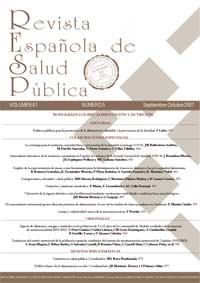Cost-utility analysis of insulin pumps compared to multiple daily doses of insulin in patients with type 1 diabetes mellitus in Spain
Abstract
Background: The use of continuous subcutaneous insulin infusion (CSII) for treating Type I diabetes mellitus (DM1) has been related to better metabolic control compared it to daily multiple insulin injections (DMI) and thus to a lowering of the related costs. However, this therapy is now being used to a lesser extent due, at least partially, to the higher initial cost of purchase. This study is aimed at estimating the clinical and economic consequences of using CSII as compared to DMI by means of a cost-utility analysis. Methods: A mathematical simulation model was adapted using nationwide clinical and economic data to simulate the long-term clinical and economic consequences for a DM1 patient. The time horizon was the patient s lifetime, including only direct healthcare costs and updating both costs and benefits at an annual 3% rate. Results: In the basecase, the patients treated using CSII gained 0.890 years (p<0.05) and 0.852 QALYs (p<0.05). CSII treatment gives rise to an incremental average cost of 25,523 (p<0.05) per patient treated, which gave us an incremental cost- utility ratio of 29,947 /QALY [CI 95% (29,519; 30,375)]. Conclusions: The improvement in the glucose control among those patients treated using CSII was related to an overall lower cost in the handling of DM1 patients, which was found to have a favourable cost-utility ratio in comparison to conventional MDI treatment.Downloads
Published
2008-03-17
Issue
Section
ORIGINALS

